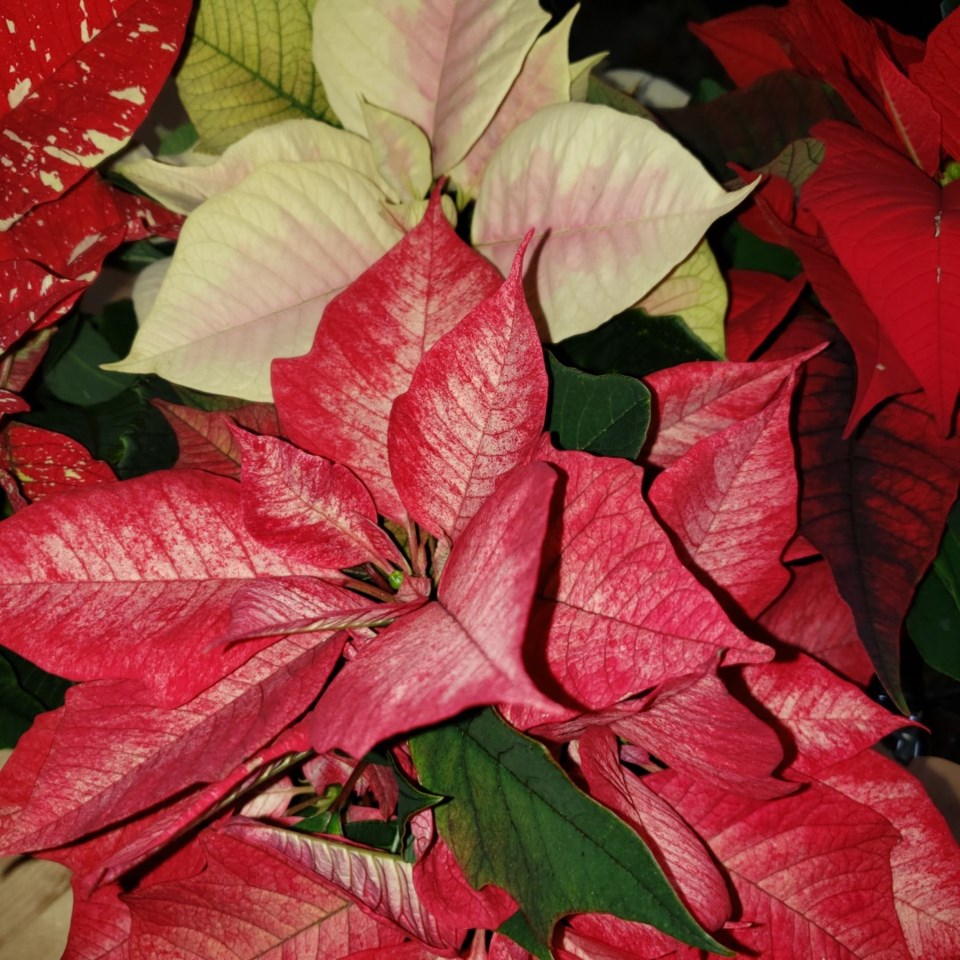Poinsettias are truly the “Christmas Plant”. Last week’s column detailed how to keep your poinsettia in good shape throughout this holiday season. This week I would like to concentrate on how to keep that poinsettia thriving in its entire holiday splendor for many years to come. As you remember from last week poinsettias are native to Mexico and in their native surroundings are a large, leggy shrub. Therefore, if you intend to keep your poinsettia for years to come then you will be nurturing a shrub for the future despite the selection and breeding that has made them more compact.
Once it is beginning to green up outside it is time for gardeners to decide the fate of that likely still rather attractive poinsettia that is rather reminiscent of Christmas past. Some of us will undoubtedly just ignore it and eventually compost it; others prefer to convince it to reflower again for the next Christmas season.
In the spring of the year, it is time to cut back your poinsettia to about 15cm. This will encourage new growth. It is also a good idea to repot the plant into a pot that is slightly larger than the previous one. Place it in a very sunny location. Continue to water but let the media dry out almost completely between watering. Once June rolls around you can increase the watering and place the plant outside in a sheltered location. In the same fashion that you would harden off your bedding plants, gradually acclimatize your poinsettia to withstand a few hours of direct sunlight each day. At this time, I like to dig a hole in a suitable location in the garden and completely bury the pot. Fertilize the plant with 20-20-20 about every two weeks and watch that poinsettia grow. What you will see is the production of thick, healthy branches with very green leaves. To encourage a bushier plant, pinch back the top centimetre of the growing shoots every three or four weeks to encourage branching. In a milder climate, your poinsettia would grow into a very attractive shrub. Leave the plant outside until the nights begin to cool off. Bring the poinsettia back indoors before the nighttime temperatures reach 10 C (50 F) as they are quite subject to chilling injury. Again, place your poinsettia in a very bright indoor location. If the plant has grown substantially, and you wish to maintain that size it will have to be repotted. If you wish it to be a smaller festive plant, trim back the plant to about 4 leaves per stem.
To entice your poinsettia to rebloom for the Christmas season it must receive bright daytime light and dark nights. Flowering is “photoperiodically” induced in the poinsettia. What this means is that it requires a certain day or more correctly night length to convince it to flower. To get a poinsettia to flower it needs long nights (greater than twelve hours) and short days. Starting about mid-September, place the plant in a completely dark location at 5 PM every night. It must remain in total darkness until 8 am each morning. At that time bring the plant back out into a bright location. This schedule must be continued for about 75 days. Very short periods of light during the “nighttime” can ruin the whole process and necessitate it beginning all over again.
So, if you are the type of gardener who likes to achieve more difficult tasks – I urge you to try to reflower your poinsettia. You will likely find it a rather satisfying process – not without challenges but worth the process! All the best to you and yours throughout the holiday season.
Hanbidge is the Lead Horticulturist with Orchid Horticulture. Find us at ; by email at [email protected]; on Facebook @orchidhort and on Instagram at #orchidhort. Tune into GROW Live on our Facebook page or check out the Youtube channel GROW
Bookmark SASKTODAY.ca, Saskatchewan's home page, at this link.




